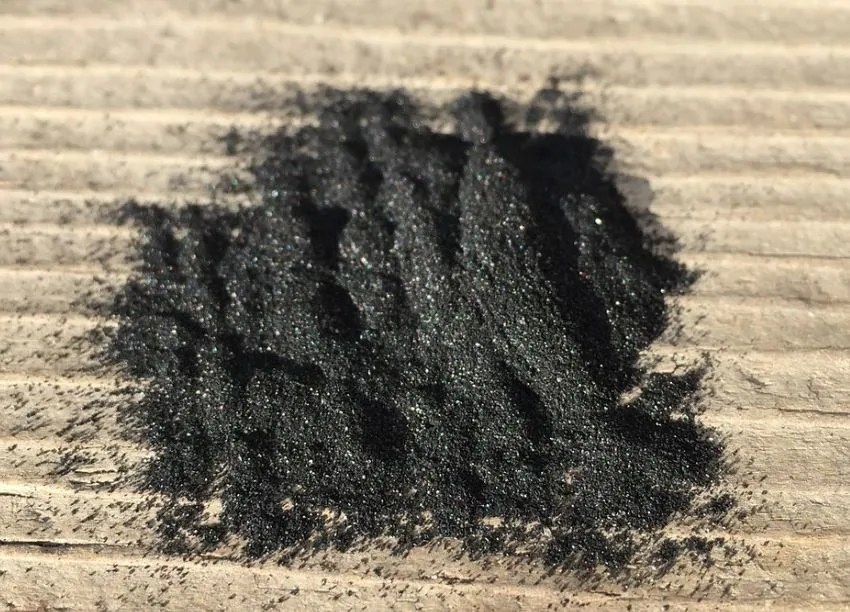
The natural environment is a magnificent thing full of unique materials that assist humanity. Activated charcoal is one of the fantastic natural items that has proven its value in various applications.
Carbon-rich materials, such as wood, are burned at high temperatures to form activated charcoal, a blackened charcoal product. Activated charcoal is a fine, odorless black powder that has a wide range of uses.
While making activated charcoal may not appear to be a short lesson, it is intriguing. The miracle of chemistry offers a world of incredible possibilities, and the opportunity to manufacture it at home is exciting.
If you enjoy manufacturing home remedies, the rest of this article will go into the contents of activated charcoal, the supplies needed to produce it, how to manufacture it, and how to use it.
Ingredients of Activated Charcoal
The following are the elements used to make activated charcoal:
- You will need charcoal or hard timbers to make it,
- Calcium chloride, zinc chloride, lemon juice, or bleach serve as the activating agents, and
The tools used to create activated charcoal are as follows:
- A raging fire,
- A sturdy pot with a loose-fitting top,
- A hammer or small sledge for crushing the charcoal for the first time, as well as some plastic bags to keep\the charcoal lumps contained,
- A blender, food processor or mortar and pestle to reduce the charcoal to dust,
- A fine mesh screen or strainer to filter smaller particulates of the charcoal from bigger ones, and
- Pans to collect and soak the charcoal particles in the chemical actifier before rinsing.
Step 1: Begin with a fire.
As you may have guessed, the process is best started in the open. Build a medium-sized fire, taking all necessary safety precautions. The fire should continue for several hours but should not be hot enough to burn away your ingredients in the pot.
Charcoal is created by subjecting the wood to high heat while denying it the oxygen that would cause it to explode into flame. The high heat causes the wood to emit various organic compounds, smoke and fumes, and a significant amount of cellulose, leaving comparatively pure carbon.
Step 2: Fill the pot with wood and place it on the fire
Fill a pot with little hardwood pieces. Make sure to ram the pot tightly with wood, but not so tightly that the lid will not fit. To allow the air inside the vessel to escape, the pot’s lid must contain a ventilation hole. However, there must be no other airflow present during this procedure.
Cook your wood directly over the fire you made in step one. Make sure the wood material is dry before inserting it into the pot.
Hardwoods such as oak and maple are ideal. Avoid very resinous woods like pine, tamarack, cedar, birch, or spruce. Remove the bark and chop the pieces into 3 to 4-inch chunks or smaller.
Because the temperatures required to manufacture charcoal range from 315 to 426 degrees Celsius, you will want a fire with flames licking at the bottom of your pot of wood chunks. The lid’s loose fit or ventilation allows smoke to escape while keeping the wood from catching fire.
If you are tempted to lift the lid during this process, proceed cautiously. Hot smoke and gases from the pot are highly combustible; if you open the cover, your pot of wood chunks may burst into flames. Wait until the fire has died down before swiftly and gently removing the lid to examine your progress. To determine your success, you may need to swirl the charcoal chunks around and maybe break up some parts to ensure complete carbonization.
Cook the wood over a steady fire for three to five hours, or until the wood inside the pot has been reduced to blackened charcoal. The absence of smoke or gas exiting via the vent hole indicates that the operation is complete.
You will need to be patient while waiting for the freshly created charcoal to cool down. Transfer the charcoal to a clean container when it is safe to handle. Rinse the charcoal with cool water to remove any remaining ash or debris before allowing it to drain and dry thoroughly.
Step 3: Grind Your Charcoal
The following stage requires some muscle power. The charcoal must be ground into a fine powder. Your goal is to crush your charcoal lumps into a fine powder. To begin, split the chunks into smaller pea-sized bits.
To reach the proper consistency, use a pestle and mortar or a mallet to beat the charcoal inside a strong plastic bag.
Once the charcoal has been reduced in size, you can continue to crush it with a mortar and pestle, or you can use a food processor or blender if you’re in a hurry.
Indeed, you should strive to do as much of this process outside as possible. As the charcoal degrades into powdered carbon, it will fall into the air and cover a variety of objects around you that may be an invasive mess. After this stage, allow the crushed charcoal to dry for 24 hours.
Step 4: Sort Your Charcoal
Whatever method you use to grind your charcoal, you will still have some more significant bits mixed in among the finer sizes. A fine-mesh screen or strainer over a pan is the simplest way to capture and separate your beautifully ground charcoal from the larger particles.
You should not do this on a windy day since you will lose much of your charcoal to the breeze. If possible, find a covered spot outside.
Step 5: Activating the Charcoal
The method of activating the carbon may appear complicated, but if you follow this ratio, you can not go wrong.
Charcoal is activated by adding calcium chloride (CaCl2) to water. However, zinc chloride (ZnCl2) and a natural supply termed “lemon juice” can also be utilized. The citric acid in lemon juice will activate the charcoal as calcium chloride or zinc chloride will.
You will need a 1:3 mixture of calcium chloride and water. For example, if you have 600 mL of water, you want 200 grams of calcium chloride. Wear protective gloves and proceed with caution as the solution will get quite hot. Also, you will need enough fluid to cover the powdered charcoal completely.
If you are afraid of chemical names that finish in chloride, lemon juice might be the way to go, but remember that even table salt is sodium chloride.
Calcium chloride is available in hardware stores, pharmacies, brewer’s supply stores, and the internet. The same is valid for zinc chloride.
While they are both harmless chemicals when rinsed off the charcoal after activation, they can become quite heated when added to water at temperatures up to 54 degrees Celsius. Thus, wear gloves when working with calcium chloride or zinc chloride since the solution will get heated.
After you might have made the calcium chloride solution, mix it in a stainless steel dish with the charcoal. Add the liquid solution to the charcoal in tiny batches, stirring continuously. Your goal here is to get a toothpaste-like consistency. Allow the mixture to sit covered for 24 hours once you have achieved the paste. At the very least, the solution should be a slurry with some liquid on top.
Step 6: Rinsing Away The Actifier
Drain away any extra moisture after the mixture has brewed for 24 hours. Let the liquid drain through a muslin cloth. The mixture should be damp but not wet.
A coffee filter in a mesh strainer positioned high over a bowl is the simplest method for rinsing your charcoal. This takes time, and the charcoal should be cleaned three times with distilled water.
Do not use well water since the calcium, iron, and lime will be absorbed in the water, reducing its efficacy. Using city water or water from city water distribution companies is also not recommended as fluoride is commonly found in city water, and the charcoal will absorb it.
This stage of rinsing away the aquifer is a time-consuming operation, but it is well worth the extra expense of a gallon or two of distilled water.
Step 7: The Final Drying
After draining any extra liquid, transfer the sludge to a clean metal pot. Relight the fire and lay the pot with charcoal over the flames for three hours to cook. The contents of the pot must come to a boiling point to activate; therefore, keep the fire hot enough to do so.
Allow the mixture to dry completely once it has been cooked. As a result, you have made a batch of activated carbon that can be used in various ways.
Step 8: Keep Your Activated Charcoal Safe
Activated charcoal is best stored in a canning jar with a tight-fitting lid. You don’t want to expose activated charcoal to air or chemicals in the air since scents and even humidity will damage the charcoal as it absorbs everything it comes into contact with. Another option is to preserve the activated charcoal in a jar by encapsulating it in gel covers.
7 Uses of Activated Charcoal
Activated charcoal has numerous applications. They are as follows:
For treating poison
Even in hospitals, activated charcoal solutions are frequently used as the first defense against minor poisoning. For those who drink alcohol, ingesting a tiny amount of activated charcoal before bed or even while drinking can help prevent a hangover the next day as the alcohol can be effectively absorbed by activated charcoal.
For neutralizing venom and toxins
Activated charcoal is also great for insect bites and stings. Although a home cure is not always practical, spider bites and insect stings can be treated with a combination of coconut oil and powdered activated charcoal. This approach has been used to treat severe spider bites. Although it is not a complete cure, it can help to keep the venom from spreading and creating additional necrotic tissue and infection.
For Filtering water
Many standard kitchen water filters use activated charcoal. Standard water filters contain two layers of filtration, with activated charcoal serving as the ultimate filter. While charcoal will not eliminate all dangerous substances, it will remove odors and flavors that may be present even if biological dangers are not there. That is why it is utilized in kitchens where the chlorine taste from municipal water systems is an issue.
As a toothpaste whitening agent
Many people use activated charcoal to make their teeth whiter. You can add a few drops to your usual toothpaste or manufacture your own by mixing one teaspoon charcoal with 4 tsp baking soda and 4 tsp coconut oil. If desired, add a few drops of essential oil to give it that refreshing mint feeling.
For relieve bloating, gas, and other digestive issues\
Although further formal research is needed, many claims that activated charcoal helps with digestive difficulties. The only way to find out if it works for you, like any medicine or treatment, is to try it. It won’t hurt to try because it’s safe for most individuals to use.
As a component of skin care products
You might wish to experiment with some skin cures after learning to create activated charcoal. Activated charcoal is used in many high-end skincare products to purify and eliminate impurities.
A helpful tip for air cleansing
Activated charcoal can be used to purify the air in your home. To achieve this, simply wrap up some activated carbon in a linen pouch or a sock and place it in a room filled with a bad smell. The bag will swiftly absorb any offensive odours, leaving clean air. A clever approach is to place the pouch near a fan. The fan will circulate the air around the activated charcoal, purifying it as it goes.
Conclusion
This article demonstrates that making activated charcoal at home is simple and effective. We have also seen its numerous applications, but one thing you should avoid doing is using it as a food additive.


